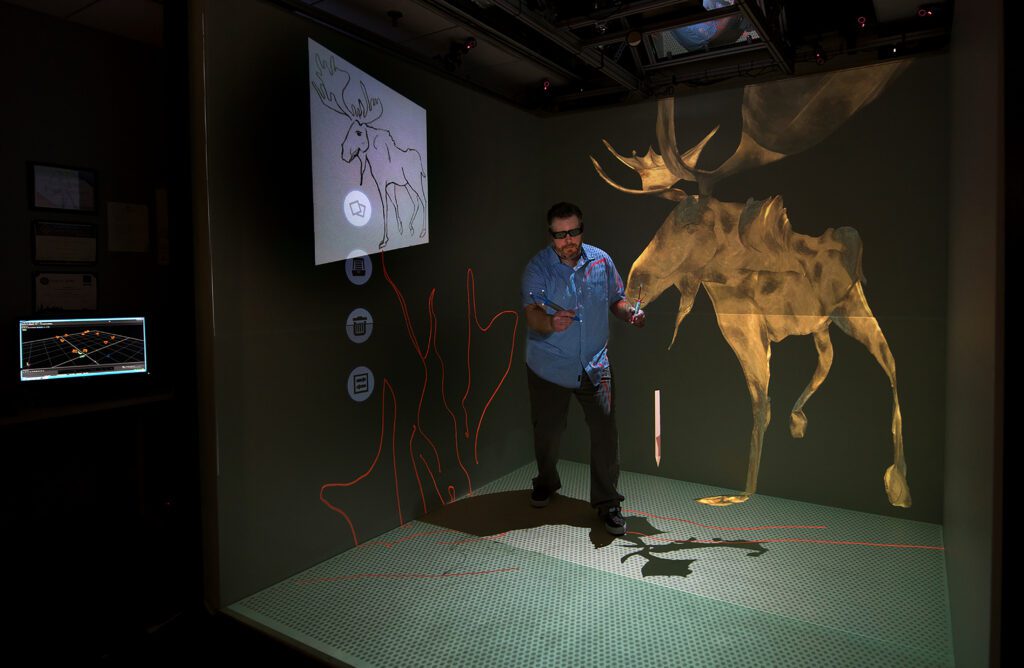Game development combines art and technology to create an immersive and engaging player experience. Art is responsible for the visual elements such as concept art, character design, and animation, while technology powers the game mechanics and dynamics. Programmers and artists collaborate throughout the game development process to create a cohesive whole with effective communication. Future game development will continue to blur the lines between art and technology, making game development more accessible to artists without programming experience. As AR and VR technology advances, game development will offer new and immersive player experiences, revolutionizing fields such as education and training.
The Intersection of Art and Tech in Game Design: How Programmers and Artists Collaborate to Create Great Games
Introduction
Game development is a complex process that brings together different disciplines and skill sets. At the heart of any game is the intersection of art and technology. Both art and technology play a critical role in creating an immersive and engaging player experience. The art is responsible for the look and feel of the game while technology powers the game mechanics, interactions, and dynamics. In this article, we will explore how programmers and artists collaborate to create great games.
The Role of Art in Game Design
Art plays a critical role in game design. It is responsible for creating the visuals that players see and the mood the game exudes. The art typically includes concept art, character design, environmental design, 2D and 3D models, textures, and animations. The artists work closely with game designers to come up with a visual style that complements the game’s story and mechanics.
One of the primary goals of art in game design is to create an immersive atmosphere. When the visuals of the game are cohesive and well-designed, they can help transport the players into the game’s world. It can also affect the players’ emotional responses and gameplay experience.
The Role of Technology in Game Design
As critical as art is in game design, technology is equally important. Technology is responsible for creating the underlying systems that drive the game. It manages the virtual world, the game mechanics, physics, and interactions. The technology of a game is what processes player input and responds in real-time.
Game developers rely on multiple technologies to bring their vision to life. These technologies include game engines, programming languages, and specialized tools. Game engines provide an efficient and streamlined way to create games by providing tools and API support for graphics, physics, animation, and audio. Game developers typically code in languages such as C++, C#, or Java.
The Collaboration between Programmers and Artists in Game Design
Creating a great game requires a collaborative effort between programmers and artists. Programmers write the code that powers the game while artists design the visuals that complement the gameplay. The two disciplines are interdependent, and effective communication is critical for success.
The collaboration between programmers and artists typically begins during the conceptualization phase. Artists and game designers work together to create the game’s overall style and vision. This shared understanding of the game design helps guide the artist’s creative process.
Once the concepts are established, the artists create visual assets based on the game’s design documents. The programmer’s role is to incorporate these assets into the game using the game engine’s tools and API. The programmers ensure that the gameplay mechanics align with the game’s visual style.
This process is iterative, with the programmers and artists continually refining and adjusting their work based on feedback from each other. Effective collaboration requires both parties to be willing to listen and adjust their work to create a cohesive whole.
The Future of Art and Technology in Game Design
As technology progresses, the lines between art and technology continue to blur. Game development is becoming more accessible to artists without programming experience, thanks to the creation of tools like Unity and Unreal Engine. These tools provide artists with more control over the game’s visuals, enabling them to create atmospheres and experiences that were previously impossible.
As well, with the continued evolution of AR and VR technology, game development is poised to offer new and immersive player experiences. AR and VR are poised to revolutionize the way players interact with games and are already proving to be influential in fields such as education and training.
Conclusion
The intersection of art and technology is critical in game design. Great games are the result of the effective collaboration between artists and programmers. While the two disciplines are very different, they complement each other and are interdependent. The future of game design looks bright, and as technology advances, we can expect even more immersive and engaging player experiences.
